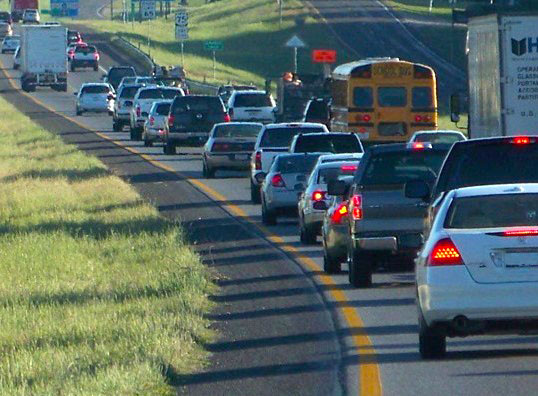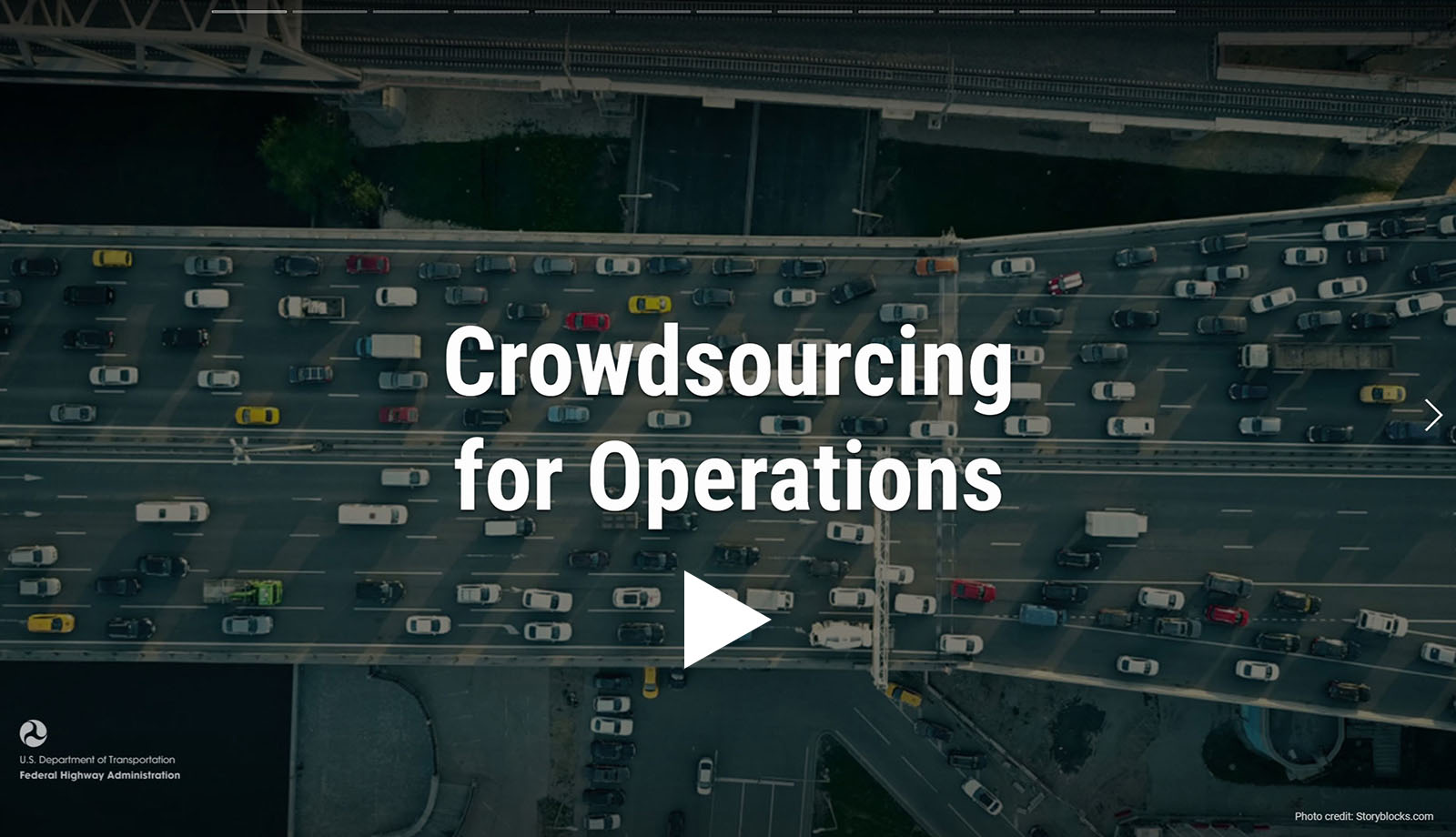
Crowdsourced Data Improves Safety on Indiana Roads
Crowdsourcing is a low-cost, powerful tool that leverages the public to collect data that can be applied to improve traveler information, traffic incident management, signal timing, weather-responsive management, work zone management, and more. Crowdsourcing overcomes gaps in geographic coverage of traditional intelligent transportation system (ITS) monitoring systems, lags in information timeliness, costs associated with monitoring equipment, and jurisdictional data stovepipes.
Crowdsourced data can come from social media, specialized apps, vehicle probe providers, and more recently, connected vehicle data providers. Crowdsourcing data from telematics on connected cars provides all types of second-by-second information such as vehicle speed, wiper use, rapid acceleration, hard braking, and vehicle routing.
“The vast amount of crowdsourced data generated by modern vehicles and smartphone apps is a deep well of insight that can be leveraged by departments of transportation and local agencies across the United States,” said James Colyar, FHWA crowdsourcing for advancing operations co-lead for Every Day Counts round six (EDC-6).
The Indiana Department of Transportation (INDOT) is one State transportation agency that uses multiple crowdsourced data as part of its real time traffic monitoring program and to identify broader operational improvements and safety enhancements. Crowdsourced data helps INDOT measure real world conditions much more efficiently than roadside observers, video collection, or test vehicles making circuits on the road network.
INDOT analyzes crowdsourced data in real time and near-real time as opposed to the weeks, months, and years that may be required for some types of data. Timely data means faster identification of emerging problems and hotspots and accelerated improvements to transportation system safety.

INDOT is using crowdsourced hard braking data to help identify and prioritize safety improvements.
Credit: FHWAHard Braking Data Provides Insight on Safety Improvements
Through an innovative partnership, Purdue University helps INDOT ingest and analyze approximately 11 billion anonymous connected vehicle records each month, accessed daily from a third-party data provider. This data represents 5 percent of vehicles on Indiana highways. Early applications for it include identifying and prioritizing safety improvements to work zones and the broader road network.
By comparing 4.5 years of crash data at eight locations with just 1 month of hard braking data, the Purdue team found a correlation between hard braking and rear-end crashes, meaning this type of crowdsourced data is a good surrogate for safety analysis. INDOT also pays close attention to hard braking events approaching work zones and uses that information to measure the effectiveness of various queue warning systems and queue warning trucks.
Broader INDOT Crowdsourcing Program Improves Operations and Safety
INDOT’s look at hard braking data is just one part of a robust crowdsourced data program and one of several partnerships with Purdue.
“Purdue is also analyzing crowdsourced data to help analyze origin-destination based construction diversions and determine the effectiveness of official detour routing, said Ed Cox, INDOT ITS Engineering Director. “This helps operations engineers to develop better messaging and signing plans for major projects.”
In this EDC Outtake, Ed Cox of the Indiana DOT provides examples of how the agency uses collected vehicle data.
Credit: FHWAIn addition to the data that Purdue processes for the collaborative R&D effort on hard braking, INDOT processes crowdsourced data for over 46,000 roadway segments every minute into its Traffic Management Database, or over 473 million records per week. INDOT uses this complete network coverage of segment speeds to deliver statewide travel-time information onto hundreds of message boards and dedicated travel-time signs.
“Before crowdsourced data, travel-time calculations were limited to the urban areas with traditional radar-based speed sensors,” said Cox, “but now with crowdsourced data, the entire network is effectively instrumented.”
In addition, INDOT uses crowdsourced data to determine which signalized intersections and corridors should be prioritized for signal re-timing, to measure benefits of traffic signal timing on select corridors, to monitor work zone effectiveness, and to adjust maintenance of traffic plans. In the future, crowdsourced data could even serve functions such as helping to identify areas underserved by electric vehicle charging stations.
“These examples from Indiana show the value agencies can derive from crowdsourced data,” said Colyar. “And, as more vehicles become connected and more applications for crowdsourced data are discovered, crowdsourcing information will become invaluable for agencies of all sizes.”

Launch the storyboard for more examples of States using crowdsourcing to improve operations.
Credit: FHWA—MORE INFORMATION
Watch a webinar from the Adventures in Crowdsourcing webinar series.
Visit the EDC-6 Crowdsourcing for Advancing Operations webpage.
Contact James Colyar of the FHWA Office of Operations, or Greg Jones or Ralph Volpe, both of the FHWA Resource Center, for information and technical assistance.
Notice:The U.S. Government does not endorse products or manufacturers. Trademarks or vendor/manufacturers’ names appear in this document only because they are considered essential to the objective of the document.
Recommended Citation: U.S. Department of Transportation, Federal Highway Administration - Washington, DC (2021) Innovator Newsletter, November/December 2021, Volume 15 (87). https://doi.org/10.21949/1521365



